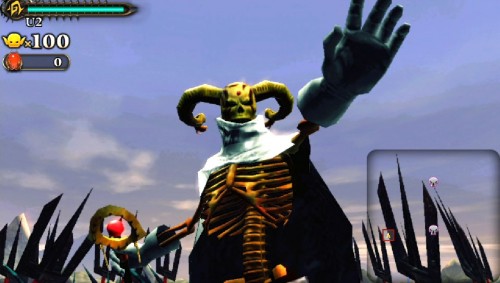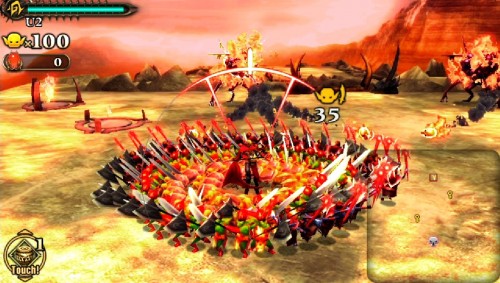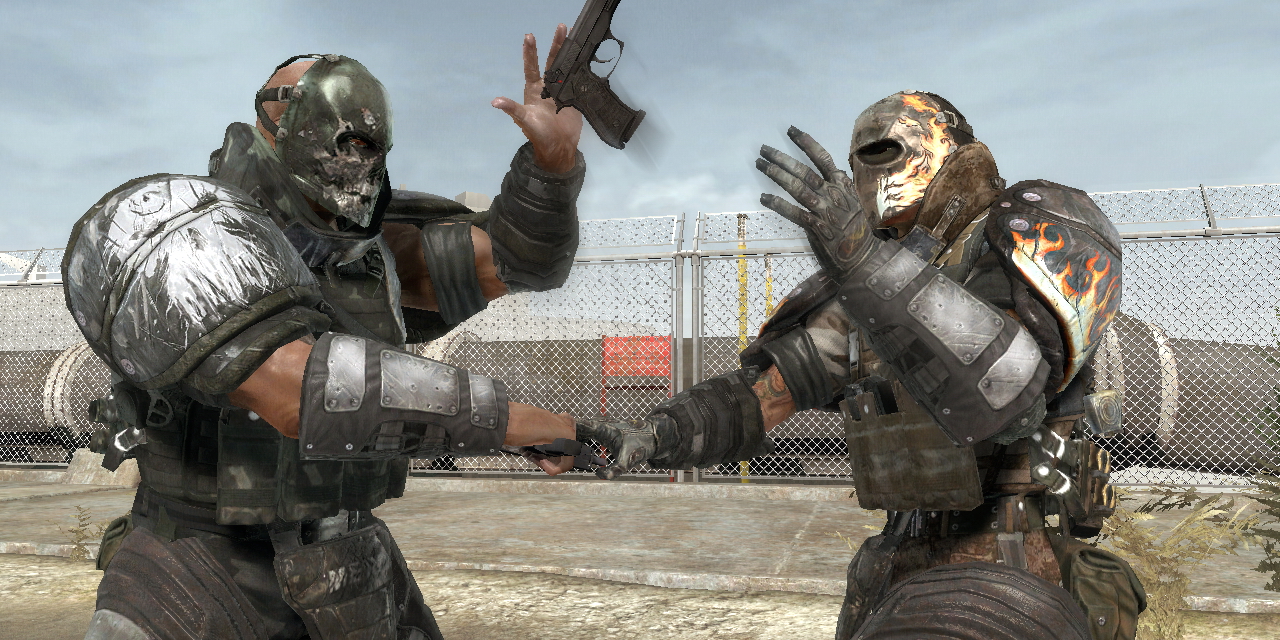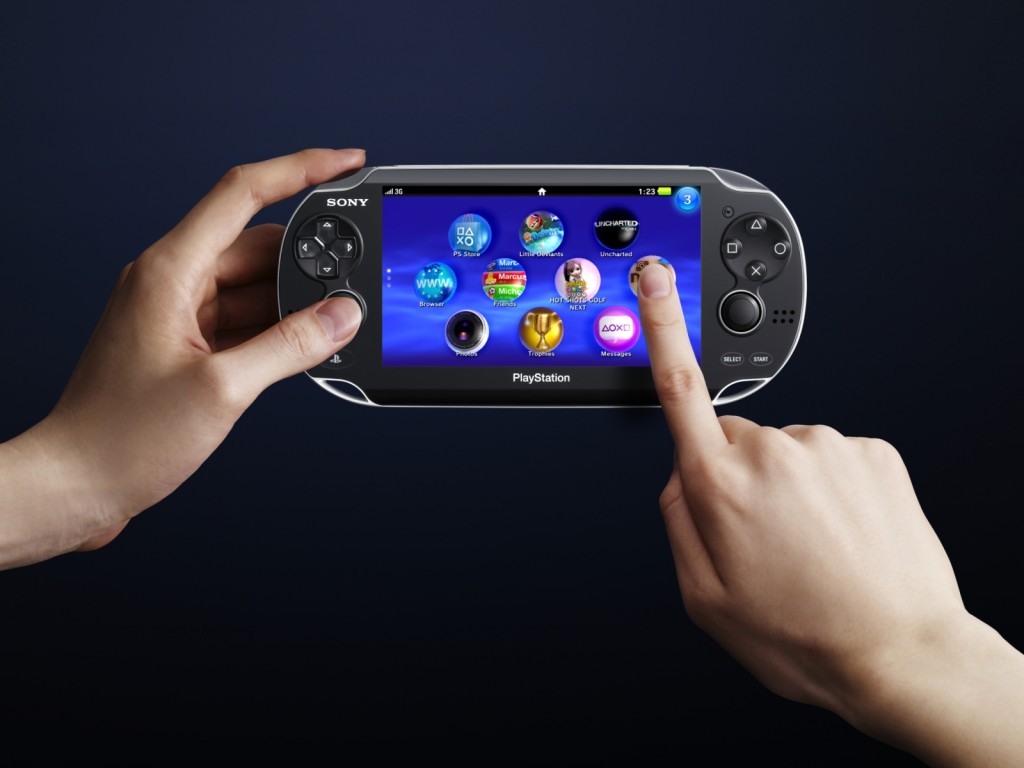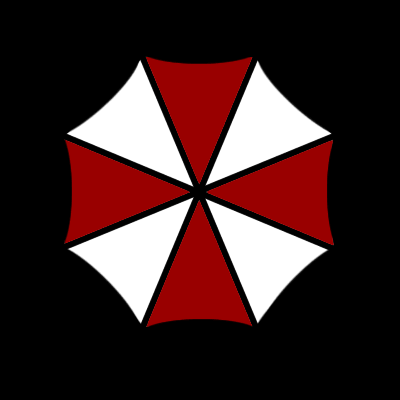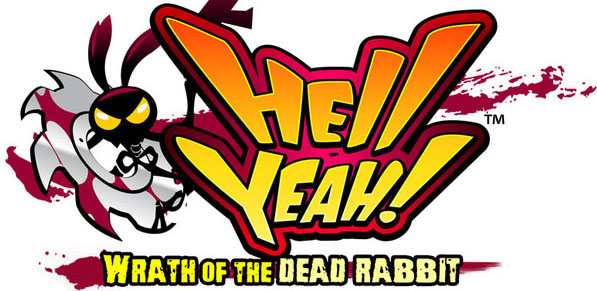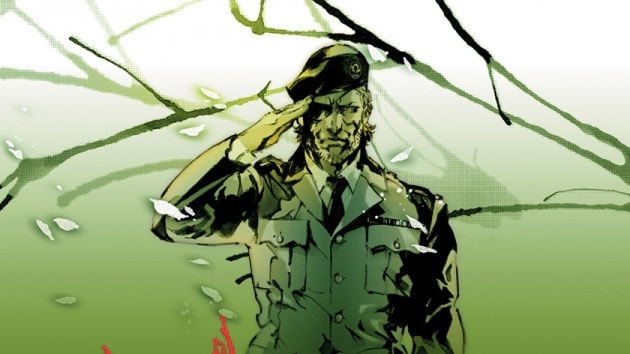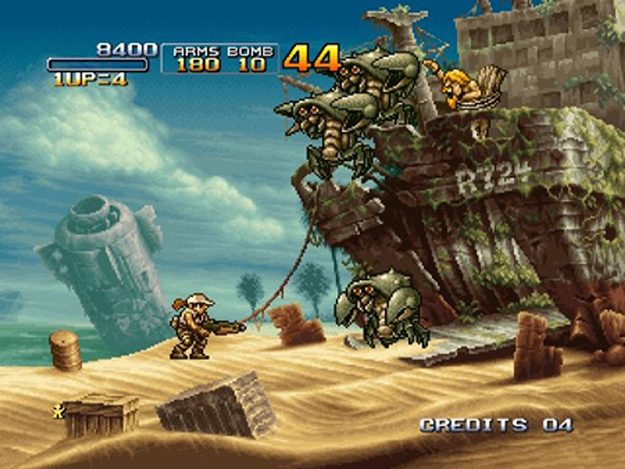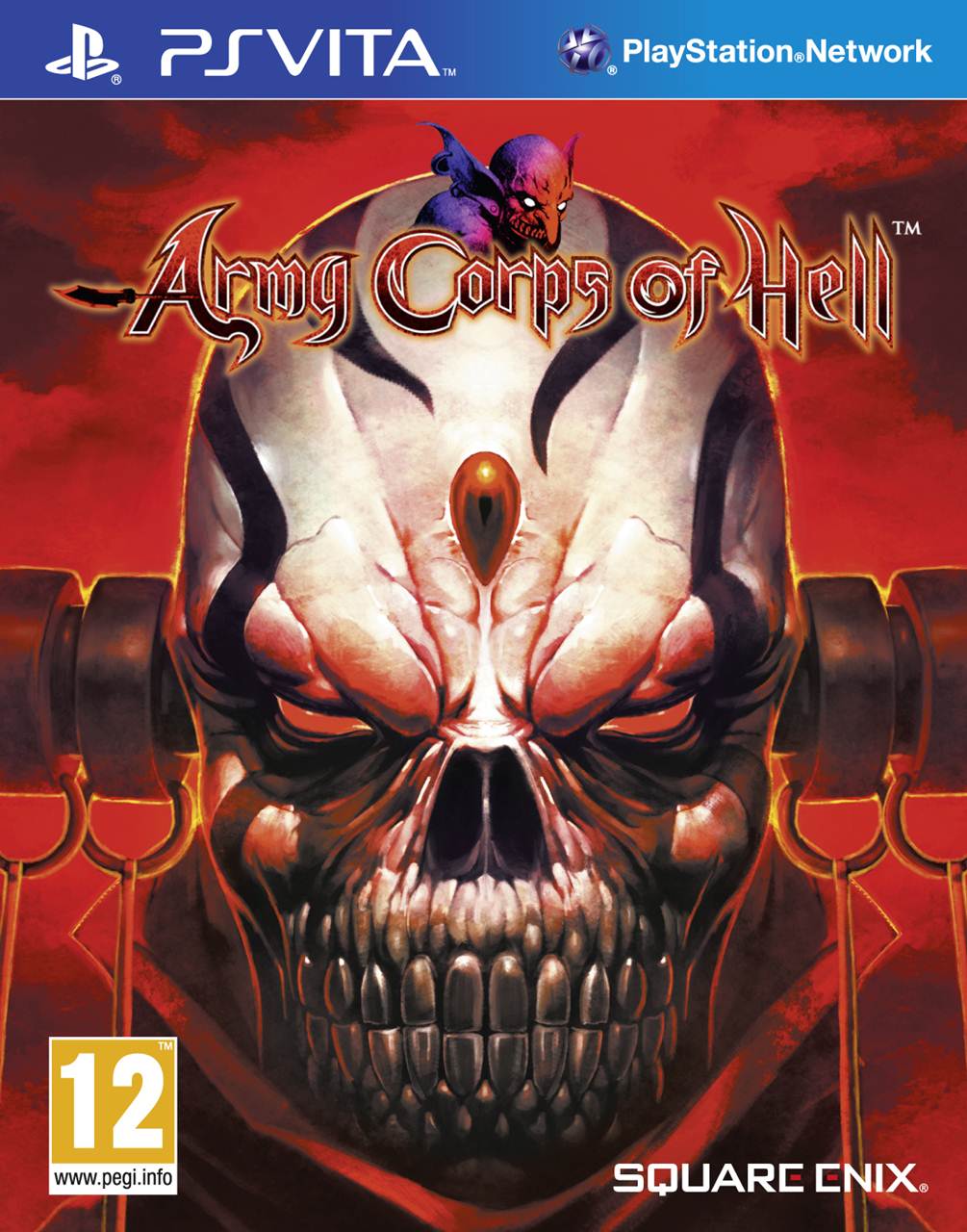
Army Corps of Hell is probably the most metal game I’ve ever played. You take on the role of a skeleton overlord called the King of Hell, as you command armies of goblins around ghastly landscapes, eating the faces off horrific monsters while heavy metal music roars in the background. Published by Square-Enix, of all companies, this is a very strange title to see at the launch of the PS Vita. It’s a new IP with a premise that would seem to appeal to most action-adventure fans, yet contains gameplay that’s a weird mix between strategy, RPG and action games. It certainly warrants a look just because of how unique the experience is, but is it worth the purchase as one of your first Vita titles?
The gameplay of Army Corps of Hell is a little hard to explain, but it may help to know that it has been developed by ex-Nintendo staff who worked on Pikmin. Certainly, there’s more than an air of Pikmin about it as your multi-coloured goblins swarm around the King of Hell only to be tossed like the worthless minions they are at targets, except this time you’re not tossing little leaf people at mildly threatening obstacles but hurling horrific menaces at equally disgusting abominations with the intention of murdering them.
The King of Hell himself can’t actually do anything on the battlefield, leaving everything up to the goblins. You move the King around using the two analogue sticks, and toss goblins with the R button. You can get your goblins to form up around you for increased defense and to prepare certain attacks. There are three types of goblins – soldiers, spearmen and magi. Soldiers can be tossed at enemies one by one to inflict damage, and if you get enough of them covering an enemy at a time you can activate a ‘salvo’ attack which causes them to burst into a pleasing blood shower. Spearmen must first be brought into formation, and then fired off like arrows onto enemies, and magi turn the game into a retro-shooter of sorts. Commanding your magi brings the camera up high, as you look down on the battlefield and your small block-like formation of goblins firing pellets of energy like a hellish Space Invaders. Annoyingly, you can only control one group at a time, and you have to bring your goblins out of formation to do so, which leaves you vulnerable to attack. That said, this unique system is pretty enjoyable for the first few hours of the game, as you get used to its quirks. The main issue is that the game gets repetitive after the first few hours, and while it’s of a decent length (with 40 missions or so), you’ll want to keep your playtime to short busts to avoid getting burned out.
The plains on which you do battle also get pretty same-y pretty quickly. You’re confined to small arenas that have different obstacles for you to surmount, including electrical fences and enemies on fire. These require you to put a little bit more thought into your tactics, giving you plenty of reason to switch between the various goblin-types. Each mission is composed of several small arenas, connected by bridges that appear once you’ve defeated all the enemies, and this is another reason the game gets repetitive. You simply wipe out all the enemies, rush along the bridge, rinse and repeat. On occasion, you are faced with giant bosses, and these present some variety in the proceedings. These guys require some precise targeting, which is often a problem given the wide area of attack most of the goblins possess, and you’ll frequently find your minions getting crushed, burned or obliterated by the dozen. You can revive your goblins at shacks around the map, but this requires red gems gathered from fallen enemies. If you need to heal the King himself, you’ll need to use ‘drums’. These are quite annoying health items, as they require you to tap rhythmically on the back of the PS Vita’s touch pad (while the rest of the game proceeds) to properly heal the King, instead of just, you know, working.
These drums, along with weapons you can equip goblins with, are crafted via a basic alchemy system found in the main menu. It doesn’t require too much thought, as you simply have to pick up as many items as you can find on the map during gameplay, and then head to the alchemy menu to see what you can craft. You can also pick up different clothes for the King that affect his recovery and power, but the customisation here is pretty light and easy to understand.
Army Corps of Hell‘s visuals are more PSP-quality than PS Vita, with low-polygon models and bland textures throughout. This might be a necessity, considering the number of goblins on-screen at once (up to 100), and to be fair the whole thing does move at a very smooth frame-rate, especially when gliding along the skeleton bridges connecting arenas. Cutscenes are bare-bones featuring static (and often repeated) artwork with text conveying the story. The music is where the game really shines, with a metal soundtrack that’s just perfect for the chaos that occurs on-screen. The only problem we have with the metal roaring in the background is the censored expletives, standing out with a distracting ‘beeeeep’ whenever they’re shouted from the dark bearded depths of the singer’s diaphragm.
For a game made by ex-Pikmin developers, Army Corps of Hell certainly owes a lot to Nintendo’s somewhat-forgotten plant-based franchise. Playing like an incredibly violent version of Captain Olimar’s games, Army Corps of Hell is indeed, pretty metal, but does succumb to a lot of repetition as you battle your way through the game’s many stages. It’s not the prettiest looking game out there either, and the story is not expanded upon as much as it could have been, given the cool premise and bad-ass main character. If you’re after something a bit different for your Vita’s launch collection, then Army Corps of Hell can make for a rollicking insane time in short bursts.
About as metal as it gets | Great soundtrack | Inventive gameplay
Very repetitive | Average graphics

